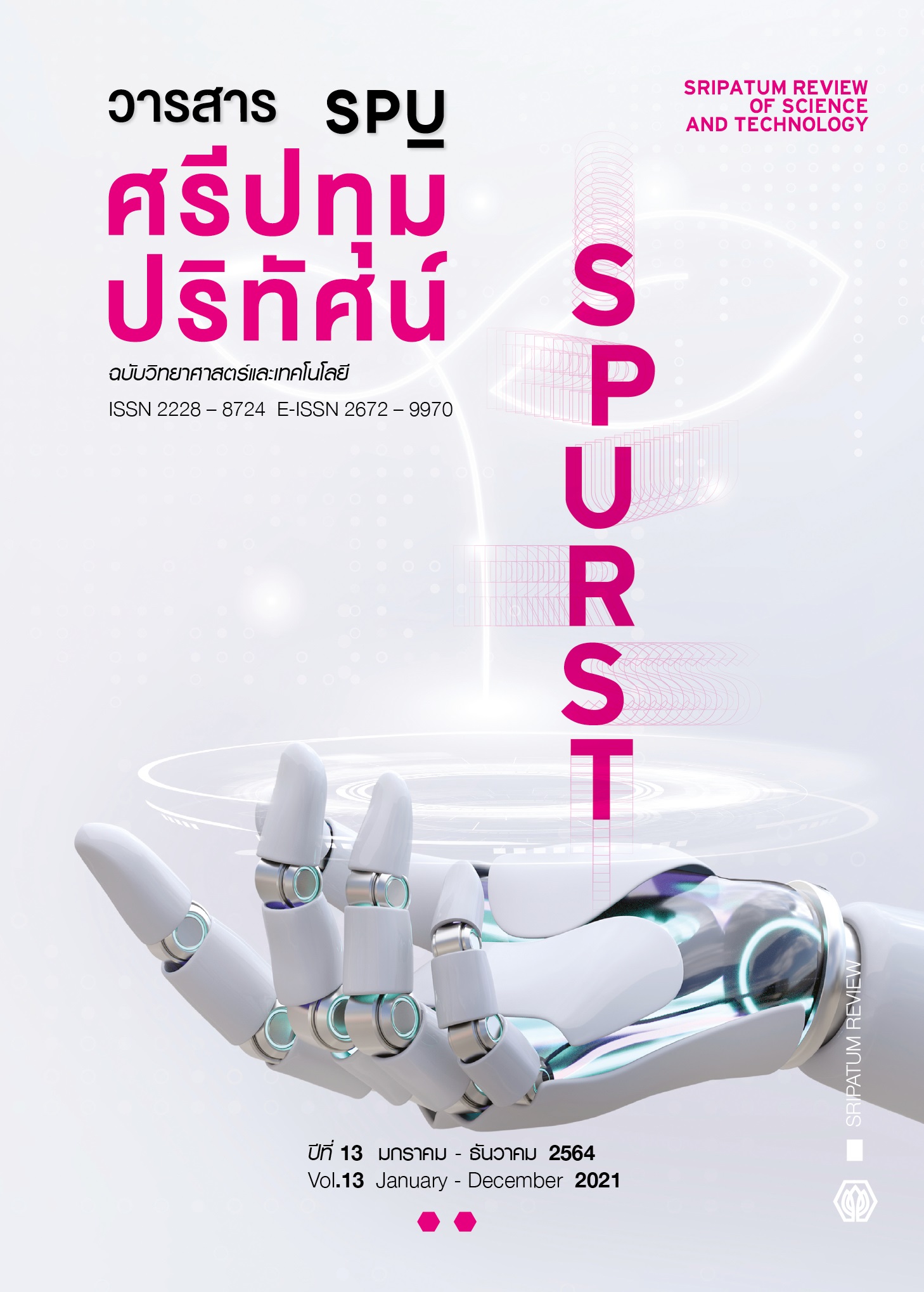Predictive System for Risk of Herniated Disc via Smartphone using Data Mining Techniques
Main Article Content
Abstract
This research proposed a prediction system for the risk of herniated disc using data mining techniques on smartphone. A total of 500 data sets were collected and used for sample data. We applied three data mining techniques, namely, Decision Tree, Artificial Neural Network, and Naïve Bay to create three prediction system models. Then, the levels of efficiency of the three models were measured and compared in terms of accuracy value, precision value, recall value, and RMSE value. After that, the models were analyzed to identify the factors that affected the risk of the occurring of herniated disc and then the model with the highest efficiency was chosen for application development. The results revealed that (1) the most efficient model for prediction of herniated disc was the prediction model based on Artificial Neural Network technique with an accuracy of 94.60%, precision of 94.60%, recall of 94.60% and RMSE of 0.218; (2) the result of identifying the factors affecting the herniated disc revealed that the most important factor was the pain in the hips, soles or toes, to be followed by the frequent lying prone down, and the condition of weakening legs, respectively; and (3) the result of evaluation of the users’ satisfaction with the developed system showed that the rating mean for users’ satisfaction was 4.20 with standard deviation of 0.53, indicating that the users were satisfied with the system at the high level. In conclusion, the developed system is appropriate and can be applied for analysis of the risk of herniated disc. It helps the patients to analyze the risk of herniated disc on their own and can suggest guidelines for preliminary treatment of the disease.
Article Details
References
AlAgha, A., Faris, H., Hammo, B. and Al-Zoubi, A. (2018). Identifying beta-thalassemia carriers using a data mining approach: The case of the Gaza Strip, Palestine. Artif Intell Med, 88, 70-83.
Bundasak, S., Srisawang, B. and Tongkom, S. (2016). Health Screening for People at Rrisk for Osteoarthritis using Data Mining Techniques. The Proceedings of the 8th National Conference on Information Technology (NCIT2016), 25-26 October 2016 at Walailak University, 168–174. (in Thai)
Dolkool, B., Thongkam, J. and Sukmak, V. (2014). Building Diabetic Foot Ulcer Prediction Models using Data Mining Techniques. Journal of Science and Technology Mahasarakham University, 33(6), 703-710. (in Thai)
Manakitphaisan, W. and Thaweesuk, P. (2018). Assessment of Retail Management System (SAVEQ) that Affects Efficiency of Store Management: A Case Study of a Convenience Store in Bangkok Operation Zone-South. Sripatum Review of Humanities and Social Sciences, 18 (1), 7-16. (in Thai)
Sinsomboonthong, S. (2015). Data Mining. Bangkok: Jamjuree Product. (in Thai)
Sripaoraya, S. and Sinsomboonthong, S. (2017). Efficiency Comparison of Data Mining Classification Methods for Chronic Kidney Disease: A Case Study of a Hospital in India. Journal of Science and Technology, 25(5), 839–853. (in Thai)
Suwanco, P., Chamnongsri, N. and Angsakul, C. (2017). A Prediction Model for Road Accident Risk in the New Year with Data Mining. Journal of Information Science and Technology, 7(2), 10–19. (in Thai)
Thai Health Promotion Foundation. (2019). Chronic back pain risk of herniated disc. [Online]. Retrieved March 20, 2019, from: www.thaihealth.or.th/Content/24453-ChronicBack pain,riskofherniateddisc.html (in Thai)
Sangmanee, W., Rattanacharoenlert, W., Phothirat, N. and Nuswad, P. (2017). Building the Predicting Model of the Chance of Repeating the Treatment of Diabetes Patient using Data Mining. The Proceedings of 5th Undergraduate Conference in Computing (AUCC2017), 20-22 April 2017 at Naresuan University, 13–20. (in Thai)
Yingsakmongkol, W. (2018). Herninted disc. [Online]. Retrieved April 29, 2018, from: http://ortho2.md.chula.ac.th/index.php/2014-06-09-04-08-48/knowledgeforpeople/39-Herninred-by-Wichai-Yingsakmongkol.html (in Thai)


